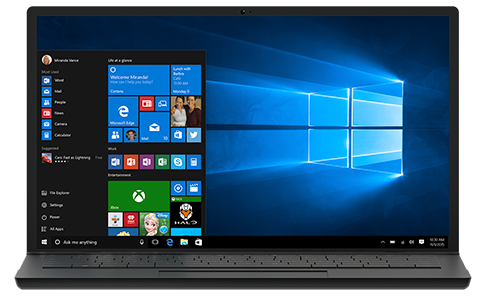Microsoft’s twice-a-year feature updates are a greater burden on companies than the old upgrade-every-six-years pace businesses used to face, according to Gartner Research.
Microsoft has given customers all kinds of reasons for why the faster release pace of Windows 10 is a great idea, from keeping pace as technology change accelerates to staying ahead of hackers by constantly improving security.
What it’s never spelled out is how much the rapid releases would cost users.
In a recent report, Gartner Research put numbers to those costs, and concluded – spoiler alert! – that Microsoft’s twice-annual feature updates were a greater burden on enterprises than the once-traditional upgrade-every-six-years tempo that businesses managed until 2015.
The report described a tool Gartner offered to clients, the “Windows 10 Feature Update Cost Model,” which lets enterprises estimate costs for tackling one or two such updates each year. The goal of the tool: to “model and plan your cost and labor requirements” for those transitions.
“Organizations must move from running infrequent projects to upgrade Windows every six to eight years to having a continuous process to qualify and push out updates every six to 12 months,” Gartner said in its report. “This results in a different pattern for staffing and budgeting. Tasks that used to be done in a separately funded project – possibly with help from a service provider – become a task that must be done continuously, probably by existing IT staff.”
Gartner claimed that its model proves Windows 10 is less expensive to upgrade over a six-year stretch compared to the old-school huge upgrade, as long as companies limited the Windows 10 updates to one each year. But participate in Microsoft’s upgrade party twice a year – which because of the way the developer has structured support is mandatory for all but the most agile enterprises – and the costs surge past those of the traditional approach.
“Organizations that deploy two updates per year will have significantly higher costs than when they did one upgrade every six years,” Gartner maintained. Costs, Garner said, doubled.
Gartner showcased the result of the modeling by walking clients through an example with a hypothetical 2,500-person firm. In one instance, the bulk of the company’s PCs were not rigorously managed, meaning that workers were able to install applications and change settings willy-nilly. In the other, the company was assumed to have a “locked and automated” environment, the most stringently-managed level in Gartner’s taxonomy. For both, Gartner laid out the costs over six years for first, one upgrade a year, and second, two upgrades annually. Each was then compared to the current cost of an upgrade as if it was done just every six years.
In that baseline scenario, each unmanaged PC would cost $445 to upgrade, most of that in direct costs to the IT department. A PC that was closely managed, on the other hand, would cost just $256 to upgrade.
Deploying one Windows 10 feature upgrade per year would generate costs totals close to that of the every-six-years upgrade, Gartner concluded. In an unmanaged scenario, each PC would cost $77 per upgrade, or $462 over six years (six upgrades), representing a 4% increase over the baseline. Tightly managed PCs, meanwhile, would cost $43 per upgrade, or $258 total, representing an increase of just 1% over the every-six-year upgrade cost.
But bumping the upgrade frequency to twice a year would send costs skyward. Each unmanaged PC would cost $66 per upgrade, or $792 over six years (12 upgrades). By pushing that many upgrades onto devices, costs jump 78% over the one-upgrade-each-half-dozen-years pace. Each closely managed PC, on the other hand, would cost $42 for each upgrade, or $504 altogether, for an increase of 97%.
In some instances, IT costs actually are lower for Windows 10’s upgrades, whether the latter are deployed once or twice a year. That’s because Gartner assumes enterprise IT will do less thorough testing of, for instance, application compatibility than it did under the traditional framework. But users’ costs typically climb, at times up to 300% of the baseline, because much of what IT once did has been shifted to users instead.
“The impact on users will be significantly higher as organizations move from a lab testing process for testing applications for an upgrade to a user piloting process for testing updates,” Gartner said.
Microsoft has touted the twice-annual upgrade cadence, but by limiting support for each upgrade to 18 months, makes it very difficult if not impossible for any but the most limber enterprises to skip alternating upgrades (and thus deploy only one annually). Gartner has, in fact, lobbied for a longer support span, say 24 months, that would let more customers deal with only one upgrade annually. That lobbying originated from feedback from its clients, Gartner has said.
“Microsoft would like organizations to deploy every update, but organizations have been challenged to deploy updates every six months, and many are hoping to deploy just one each year,” Gartner wrote in the cost modeling report.
Rolling out a single Windows 10 upgrade each year will be possible this year and next, as Microsoft has temporarily added six more months (for a total of 24) to the 1703 and 1709 versions, putting their support expiration dates at April 9, 2019 and Oct. 8, 2019, respectively. But with version 1803, the feature upgrade launched April 30, the 18-month support lifecycle returns; that version will retire Nov. 12, 2019.
“Organizations may be able to skip an update and deploy only one, especially in 2018, because Microsoft extended the support timeline for Windows Enterprise support to 24 months for releases 1709 and earlier,” Gartner pointed out.
This article originally appeared on ComputerWorld.

